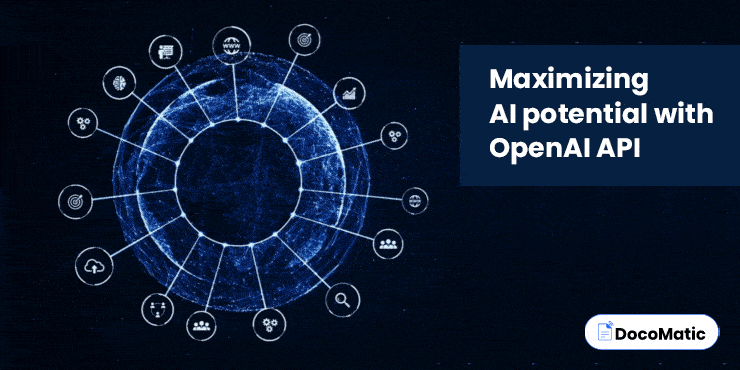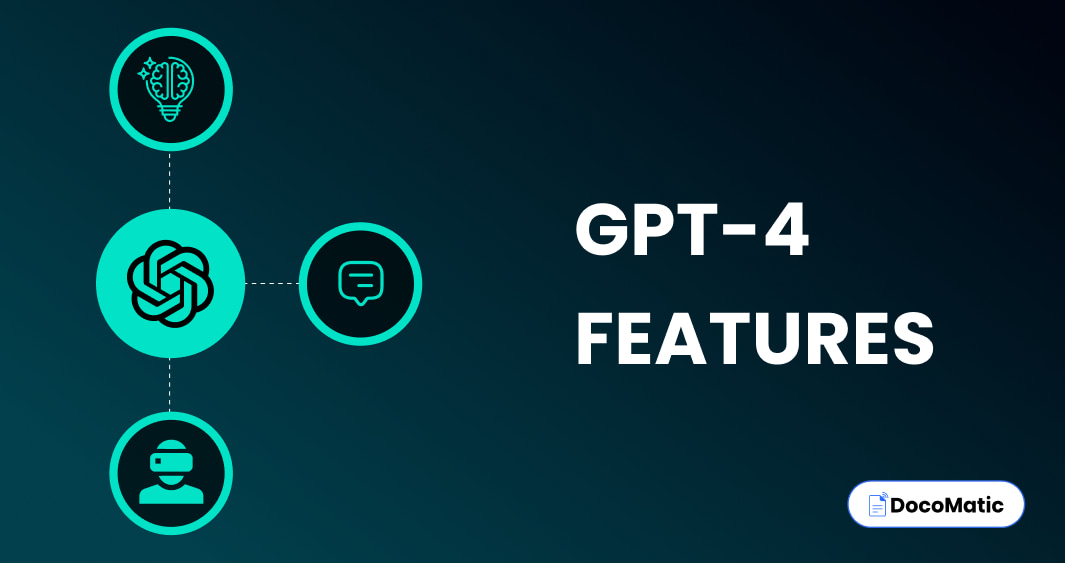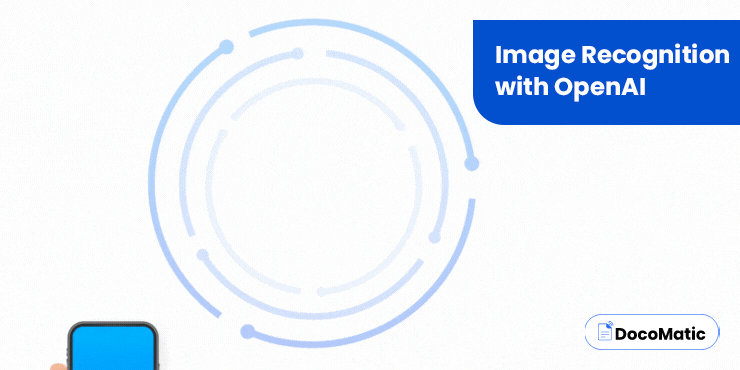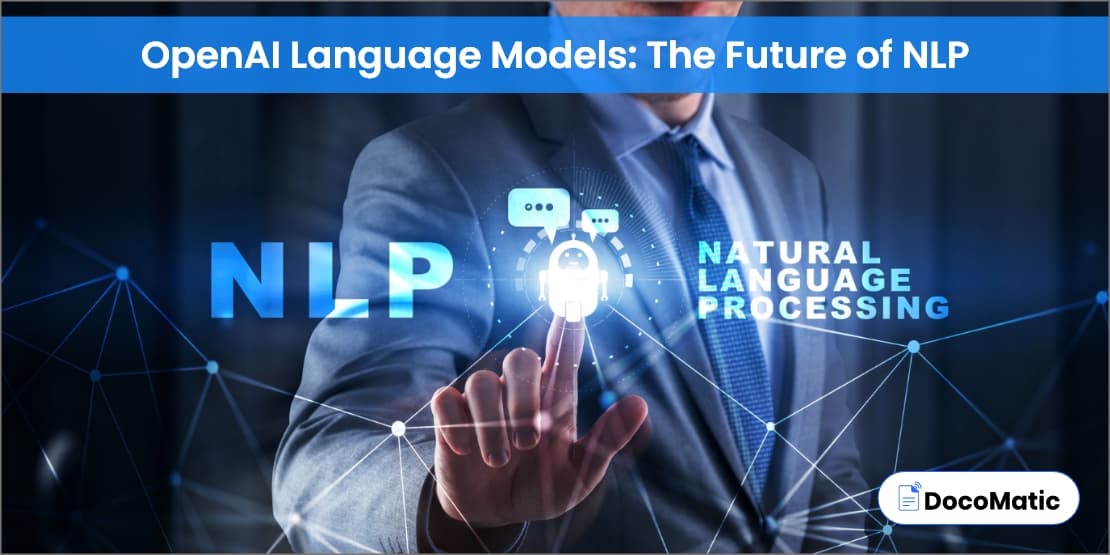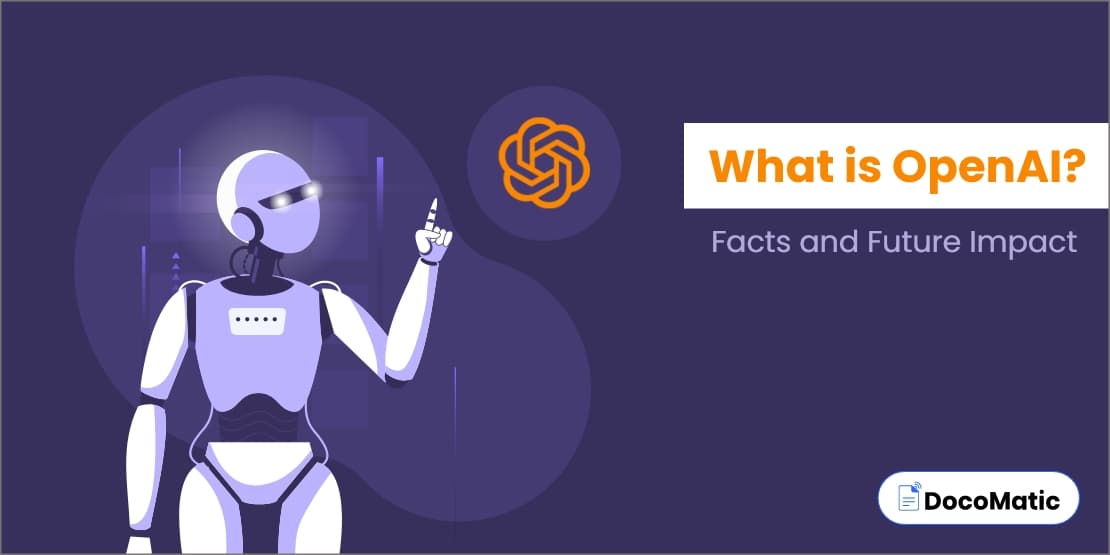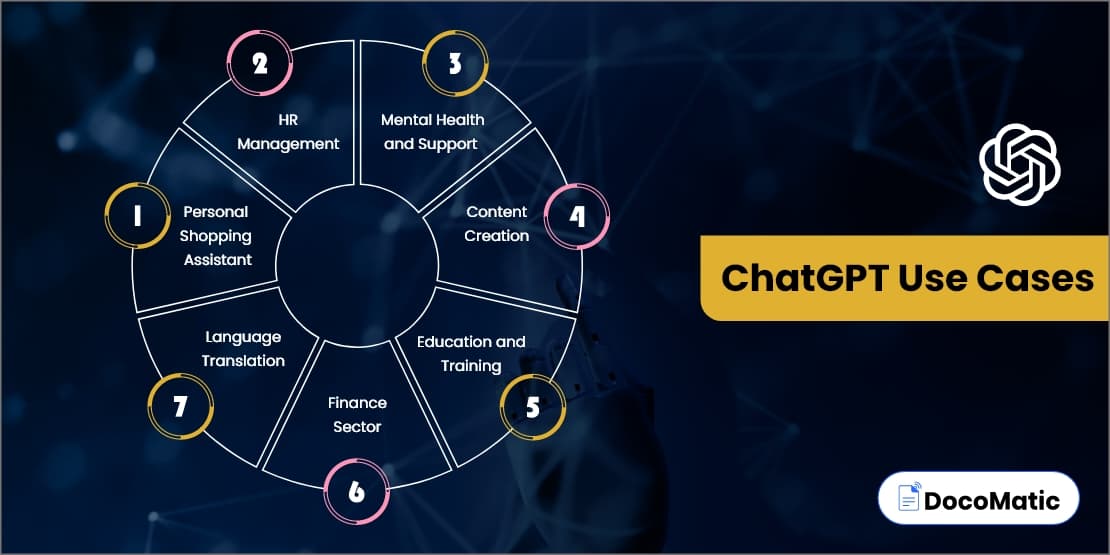Wondering how to stay ahead of your competitors, get a competitive edge, and leverage the latest breakthrough in AI development to improve business operations?
Well, we are ready to serve you what is required.
Artificial intelligence has witnessed a tremendous growth rate in recent years, harnessing the power of deep machine learning and neural networks. As per recent reports, the worldwide market size of AI has reached $136.6 billion and is projected to reach $1,811.8 billion with a CAGR of 38.1%.
However, this projected growth rate will be achieved only when AI’s potential is fully unlocked. And one way to do that is by using OpenAI API, a cutting-edge tool that allows developers and businesses to access powerful natural language processing capabilities.
In this blog post, we will explore how enterprises are maximizing AI potential with OpenAI’s API and help you stand out in today’s fast-paced digital landscape.
Table of Content
Who Powered API?
Before delving into what is API, let’s first understand by whom it is powered. Who are the pioneers behind this innovative technology? Well, the answer is OpenAI. Let’s go ahead and understand what is OpenAI and what is the role of OpenAI in the development of the application programming interface (API).
OpenAI is basically an artificial intelligence research laboratory working effortlessly towards advancing AI in a safe and beneficial way for humanity. If we talk about the recent reports, as of the year 2022, the monthly active users on this platform were 21.1 million.
So when such a huge mass of people are using this platform, it directly indicates the level of trust and reliability OpenAI has earned in the AI industry. Now let’s see what API is.
Overview of OpenAI API
OpenAI API facilitates developers to create applications with a handful of effort, no matter how simple or complex they are. OpenAI is entirely different from the old AI systems.
For example,
OpenAI API offers a versatile “text in, text out” interface that can be applied to a wide range of English language tasks. Unlike other AI solutions that are designed for specific use cases, the API provides a general-purpose interface that enables users to test it on a variety of tasks.
Developers can accelerate the developing process by accessing the extensive library of pre-trained, domain-specific AI models which are easy to integrate into any application. The advanced API techniques will let you use revolutionary AI technologies without complex coding and deep infrastructure knowledge.
Capabilities of OpenAI’s API
“OpenAI API opens up new opportunities for businesses by narrowing down the distance between conventional AI solutions and the intended outcome.”
Let’s measure the capabilities of OpenAI API:
- It offers developers strong natural language processing (NLP) capabilities that make it simple and quick to build smarter apps.
- Developers can leverage machine learning models in their AI tools and apps by using the OpenAI API.
- Even they can rapidly comprehend large amounts of data from multiple sources. This may include text, audio, and images—and implement previously impossible tasks in seconds.
- API’s advanced natural language capabilities have helped businesses get meaningful insights, ultimately boosting their customer service activities.
Examples of advanced natural language capabilities:
- Sentiment analysis.
- Intent detection.
- Text classification.
- Text summarization.
- Auto-correct.
- Intent classification.
- Classifying documents for content discovery platforms.
- The API gives you the option of fine-tuning your own unique AI models in addition to a range of AI models with various levels of power that are appropriate for performing different tasks.
Features of OpenAI API
1. Natural Language Processing (NLP):
The advanced natural language processing capabilities of OpenAI API enables businesses to process large amounts of text data more accurately and efficiently.
2. Text generation and text summarization:
OpenAI API facilitates organizations by generating human-like text. This can be really helpful for chatbots, virtual assistants, and content creation. Additionally, the API can summarize large amounts of text without spending long hours, allowing businesses to quickly and easily extract relevant information.
Large language models are however the foundation of this feature.
One such trained language model powered by OenAI API is GPT-3. It can generate highly realistic, accurate, and well-written text in a variety of tones and writing styles.
There are over 300 applications, tens of thousands of developers, and more than 4.5 billion words per day generated using API.
3. Text completion:
The completion endpoint powered by OpenAI API can be used for a wide variety of tasks. It is a simple yet powerful interface for any of the AI models. Simply add the text prompt and the model will generate text completion that usually matches the context or pattern given.
Complete a sentence: “The best way to relax after a long day is ← Text Prompt
The best way to relax after a long day is to engage in activities that help you unwind and destress, such as taking a warm bath, reading a book, meditating, or spending time with loved ones. ← Text completion
You can, however, program it if the text completion does not match your expectations.

4. Code completion:
Let’s say you’re coding a project and facing trouble with a certain function. The code completion feature of the OpenAI API help by recommending potential code snippets that might be able to assist you in solving the issue.
5. Image generation:
With the image generation feature of OpenAI API, users can create images using machine learning models. The model is capable of producing pictures from textual cues like descriptions or captions.
- For instance, the model produces a graphical image reading the description that says: “rainbow in the sky with people enjoying this view.”
- Another example can be “a red sports bike with a man in a black and fluorescent green helmet”
Benefits of using OpenAI API
The OpenAI API has the potential to assist a variety of market sectors by offering cutting-edge AI capabilities that can aid in task automation, enhance decision-making, and improve customer experience. Here are a few instances:
- Healthcare: OpenAI API can be used for medical analysis, automated medical diagnosis, and health outcome prediction. It can also help with the discovery of novel drugs and the development of patient-specific treatments.
- Finance: For identifying fraud, performing automated financial analysis, and forecasting market trends, API can be fruitful for finance companies. It can also help with the development of chatbots for improved risk management and customer service.
- Education: For developing personalized learning experiences, checking students’ answers, analysing performance data, and providing training sessions, OpenAI’s API is used.
- Gaming: The OpenAI API can be used to create intelligent game agents, enhance player experience, and better game design.
How OpenAI’s API can be used to develop advanced AI applications
Here are some of the real-life scenarios where the benefits of OpenAI’s API can be leveraged. See how they can use API to streamline their operations:
1. Chatbots
- The OpenAI API can be used to create sophisticated chatbots that converse with users and offer useful information.
- They are trained to comprehend and reply to users’ complicated and nuanced questions.
- The API’s text generation and completion feature help generate dynamic and interesting responses in real-time.
2. Sentiment Analysis
- Through NLP techniques such as text classification, language modeling, and sentiment analysis algorithms, the user’s intent can be analyzed.
- This can help businesses comprehend human feedback, identify emotions, and help understand what user exactly wants.
3. E-commerce
- Customers can receive personalized product recommendations based on their browsing and purchase history using the OpenAI API in e-commerce.
- Additionally, it can be used to enhance search capability, enabling more precise and pertinent product results.
- OpenAI API can assist in automating customer support. The chatbots can help quickly and accurately respond to frequent customer inquiries. This can speed up reaction times and improve customer satisfaction.
- Overall, OpenAI API can enhance the shopping experience for customers and increase revenue for e-commerce companies.
4. Content creation
- API can produce engaging, educational, and audience-oriented news articles, social media posts, and various other kinds of content.
- Businesses will get benefited from this automating content creation and they will be able to focus on other essential areas. Those areas can be a better online presence, more effective customer interaction, and increased website traffic.
- The API can also be used to personalize content for particular audiences, such as product suggestions or tailored messages, which can improve client happiness and engagement even more.
5. Fraud detection
- By developing fraud detection tools, undergoing financial data analysis, and recognizing suspicious patterns or anomalies, businesses can find fraudulent activities.
- It reduces the risk of potential financial losses.
FAQs
Natural language processing (NLP) for chatbots, text generation and summarization, content creation, and object detection are a few instances of advanced AI apps that can be created using the OpenAI API.
By incorporating sophisticated natural language understanding capabilities into their chatbots or utilizing image recognition for product suggestions, e-commerce companies can profit from using the OpenAI API.
Yes, the OpenAI API is appropriate for small companies since it offers a practical means of integrating cutting-edge AI capabilities into their goods and services without the need for in-depth AI knowledge.
When using the OpenAI API, you can get started by asking for access to the platform, perusing the models and documentation that are offered, and incorporating the API into your software or product.
- Analyzing and classifying data from sources like text papers, images, and audio files is known as parsing unstructured data.
- OpenAI API helps offers derive meaning from unstructured data by using natural language processing tools.
- This involves analyzing the text to determine the different parts of speech, entities, and mood.
- The data can then be applied to a variety of activities, such as text analysis, sentiment analysis, or predictive modeling.
Conclusion
Now that you have gone through the whole comprehensive guide on how AI’s potential can be leveraged using OpenAI API, you are ready to take a step forward beating all your competitors. When OpenAPI is ready to reduce the complexities involved in coding the apps, text generation, and content creation, why not use the unlocked AI’s potential to smoothen your business operations?
So, what are you waiting for? Open the door to endless possibilities, outperform your competitors, and tap into the power of OpenAI API.
